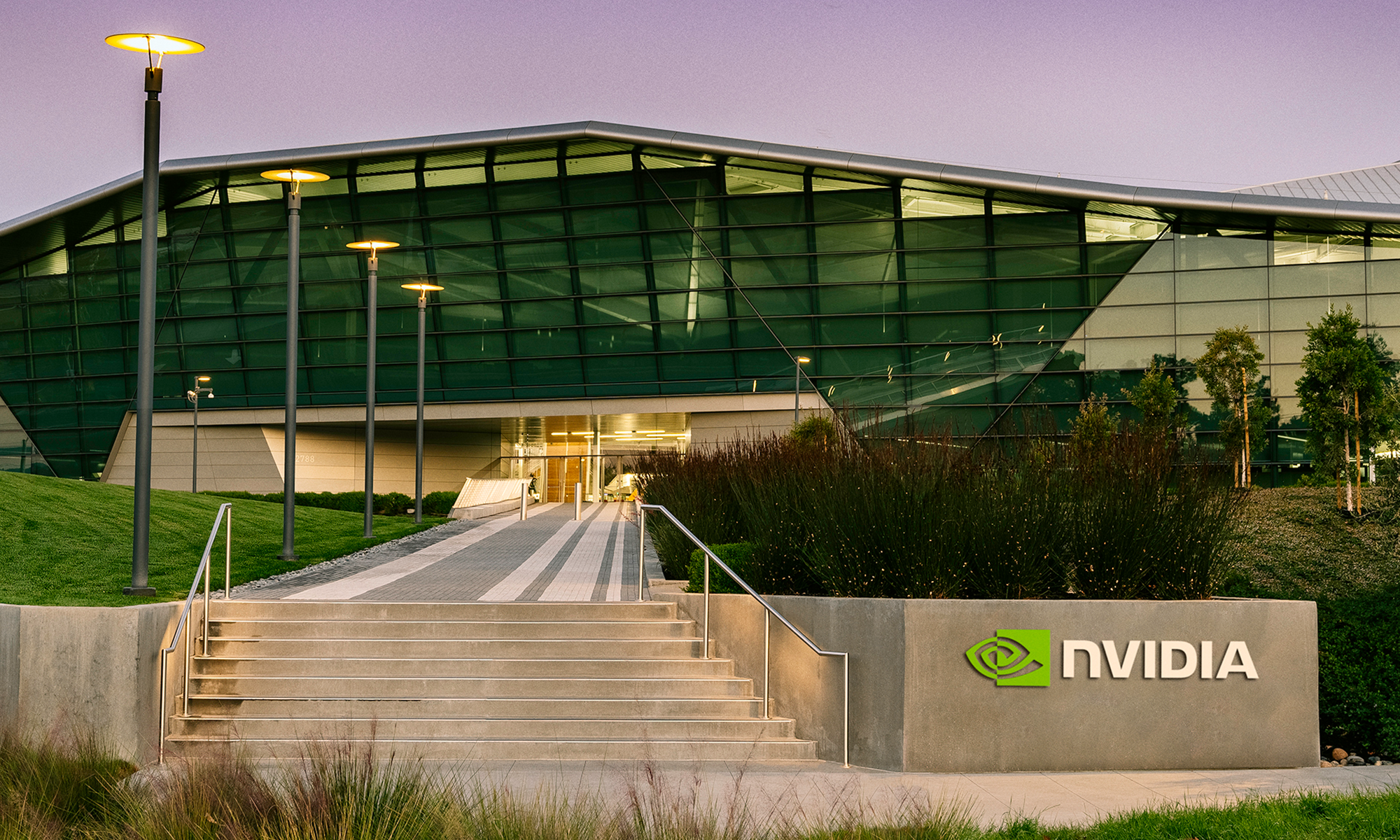The Nasdaq 100 is off to a nice start in 2023, rising more than 5% in the early days of the year. This was due to encouraging signs such as cooling inflation and healthy job growth. The positive start is also reflected in the stock prices of Nvidia (NVDA +1.02%), Advanced Micro Devices (AMD 0.02%), and Intel (INTC +0.11%).

NASDAQ: NVDA
Key Data Points
These three chipmakers gained between 10% and 21% so far in 2023, which is impressive, considering their terrible returns last year. However, there's a major threat that could derail the solid start that these semiconductor stocks are enjoying right now.
An alarming drop in PC sales could spell trouble for these companies
Market-research firm Gartner says that global personal-computer shipments were down a whopping 28.5% year over year in the fourth quarter of 2022. This was the biggest quarterly decline that Gartner has seen since it started tracking the PC market in the mid-1990s. The firm also added that PC shipments fell 16.2% for the full year.
Gartner's figures were in line with that of IDC, another noted market-research firm. IDC points out that PC shipments fell 28.1% year over year in the final quarter of 2022 and 16.5% for the full year. The firm was earlier anticipating a 12.8% decline in PC shipments for the year. This doesn't bode well for Nvidia, AMD, and Intel as they rely on PC sales for a large chunk of their revenue.
Nvidia, for instance, has been struggling due to a steep decline in sales of graphics cards that power PCs and workstations for gaming and content creation. A larger-than-expected decline in PC shipments means that the chipmaker's addressable market decreased considerably last quarter. As a result, it won't be surprising to see Nvidia's gaming and professional-visualization business take big hits when the company releases its quarterly results next month.
Nvidia's gaming revenue was down a whopping 51% year over year in the third quarter of fiscal 2023 -- which ended on Oct. 30, 2022 -- to $1.57 billion, thanks to lower sales of graphics cards that are deployed in desktops and laptops. Professional-visualization revenue was also down an alarming 65% year over year to $200 million as Nvidia's channel partners reduced purchases to align their inventories with a drop in demand.
AMD, meanwhile, could face a double whammy, as it sells both central processing units (CPUs) and graphics cards that power PCs. The company's client segment revenue fell 40% year over year in the third quarter of 2022 to $1 billion because of "a weak PC market and a significant inventory correction across the PC supply chain."

NASDAQ: AMD
Key Data Points
The company's gaming business was impacted by lower graphics revenue, offsetting the growth in sales of semi-custom chips used in gaming consoles. The gaming segment generated $1.6 billion in revenue for AMD in the third quarter of 2022. It reported 14% year-over-year growth in this segment, but the sharper-than-expected decline in PC shipments last quarter could lead to a drop in gaming revenue when AMD reports its results later this month.
Intel, on the other hand, has been struggling on account of market-share losses in the CPU space, even before the PC market's downturn. And now that PC sales are declining rapidly, things are likely to get worse for Chipzilla.
The chipmaker's third-quarter 2022 revenue was down 15% year over year on a non-GAAP basis to $15.3 billion. The client computing group (CCG), which includes sales of CPUs used in desktops and laptops, witnessed a steep 17% year-over-year revenue decline to $8.1 billion.
CCG is Intel's biggest source of revenue, so investors should brace for another terrible quarter from the company. Analysts are expecting its top line to drop nearly 26% in the fourth quarter of 2022 to $14.5 billion, while earnings could drop to $1.09 per share from $2 per share in 2021.
As such, the PC-market's weakness has the capability to stop the recent rally in shares of Nvidia, AMD, and Intel. But savvy investors may want to look at the bigger picture.
A buying opportunity could be in the cards
IDC estimates that the PC market could start recovering from late 2023 and grow in 2024. While 2022 PC and tablet shipments reportedly fell to 456.8 million units, the number is expected to increase to 459 million units annually by 2026. So the likes of Nvidia, AMD, and Intel could benefit from favorable year-over-year comparisons in their PC businesses once the near-term headwinds subside. But AMD and Nvidia seem to be in a better place to take advantage of a potential PC-market recovery.
Nvidia is the dominant force in the market for gaming graphics cards, controlling 86% of this space in the third quarter of 2022. AMD controlled 10% of this market, while Intel has started to enter this space and recorded a 4% share in Q3 2022. Nvidia's solid position in the discrete GPU (graphics processing unit) market means that it's nicely placed to take advantage of a recovery in PC sales, which should drive higher graphics card sales.
Mordor Intelligence estimates there'll be an annual growth rate of about 15% in gaming GPU sales through 2028. So it won't be surprising to see Nvidia's gaming business regain its mojo in the future, especially considering that the company has been pushing the envelope in a fast-growing niche of the gaming industry.
As far as AMD is concerned, the company's impressive share gains have been the key to its growth in recent years. The good news for AMD is that it's expected to keep taking share away from Intel, thanks to a stronger product roadmap. Not surprisingly, AMD's earnings are expected to grow at an annual pace of 13% for the next five years, while Intel's bottom line could contract at an annual pace of nearly 24% over the same period.
Nvidia, meanwhile, could clock 21%-plus earnings growth over the next five years as per analysts' estimates. AMD and Nvidia could turn out to be better long-term bets, compared to Intel. However, the recent rally in the share prices of these companies has made them expensive.
AMD is trading at 43 times trailing earnings, while Nvidia is even more expensive at 72 times trailing earnings. The Nasdaq 100, for comparison, sports a price-to-earnings ratio of nearly 25.
The PC-market's weakness is likely to weigh on shares of AMD and Nvidia in the near term, but solid catalysts could send them flying in the long run. Investors could get an opportunity to buy these semiconductor stocks at relatively cheaper valuations and set their portfolios up for success in the future.







